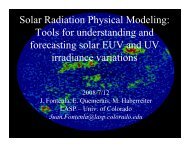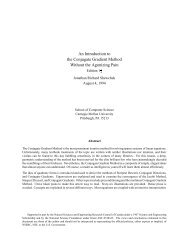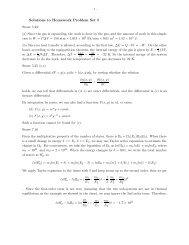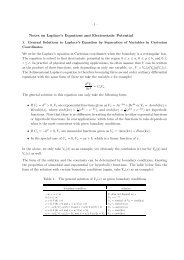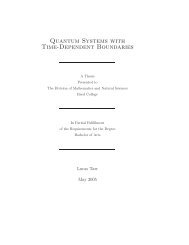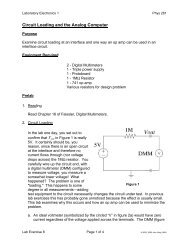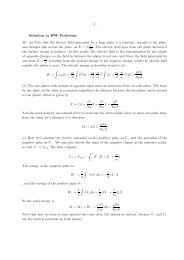The Topology of Magnetic Reconnection in Solar Flares
The Topology of Magnetic Reconnection in Solar Flares
The Topology of Magnetic Reconnection in Solar Flares
You also want an ePaper? Increase the reach of your titles
YUMPU automatically turns print PDFs into web optimized ePapers that Google loves.
1CHAPTER 1INTRODUCTIONMotivation<strong>The</strong> first solar flare was observed <strong>in</strong>dependently by R. C. Carr<strong>in</strong>gton and R. Hodgson on1 September 1859. Both Carr<strong>in</strong>gton and Hodgson were observ<strong>in</strong>g sun spots <strong>in</strong> white lightwhen they saw an <strong>in</strong>tense brighten<strong>in</strong>g near a complex spot group. We now know that onlythe most energetic solar flares produce the type <strong>of</strong> white light emission they observed thatday. <strong>Solar</strong> flares result from rapid release <strong>of</strong> energy <strong>in</strong> the solar corona and are typicallyobserved as enhancements <strong>in</strong> the emission <strong>of</strong> a wide range <strong>of</strong> wavelengths <strong>in</strong>clud<strong>in</strong>g radio,Balmer-α emission <strong>of</strong> neutral hydrogen – called Hα, ultra violet (UV), extreme ultra violet(EUV), s<strong>of</strong>t X-rays (SXR) and hard X-rays (HXR). S<strong>in</strong>ce we are unable to view the Sunfrom Earth <strong>in</strong> many <strong>of</strong> these wavelengths, our knowledge <strong>of</strong> solar flares was limited until theadvent <strong>of</strong> spacecraft <strong>in</strong> the 1960’s. While our observational and theoretical understand<strong>in</strong>g<strong>of</strong> flares has advanced greatly s<strong>in</strong>ce 1859, there are still several scientific questions aboutflares, <strong>in</strong>clud<strong>in</strong>g how a vast amount <strong>of</strong> energy is stored over tens <strong>of</strong> hours and how it isreleased <strong>in</strong> tens <strong>of</strong> m<strong>in</strong>utes.<strong>The</strong> <strong>in</strong>tensity and energy output <strong>of</strong> solar flares varies greatly. <strong>The</strong> strength <strong>of</strong> a solarflare is commonly given by its flux <strong>in</strong> 1-8 Å s<strong>of</strong>t X-rays at 1 AU, where a C flare has a fluxon the order <strong>of</strong> 10 −3 erg cm −2 s −1 . Some flares are so weak that they are on the edge <strong>of</strong>detection by current s<strong>of</strong>t X-ray telescopes. Others are so powerful that their s<strong>of</strong>t X-ray fluxis one (M flares), two (X flares), or even more orders <strong>of</strong> magnitude higher than C flares. <strong>The</strong>total amount <strong>of</strong> energy released dur<strong>in</strong>g a solar flare <strong>in</strong> the form <strong>of</strong> thermal and nonthermalcharged particles, k<strong>in</strong>etic energy and shock waves can exceed 10 32 ergs.



